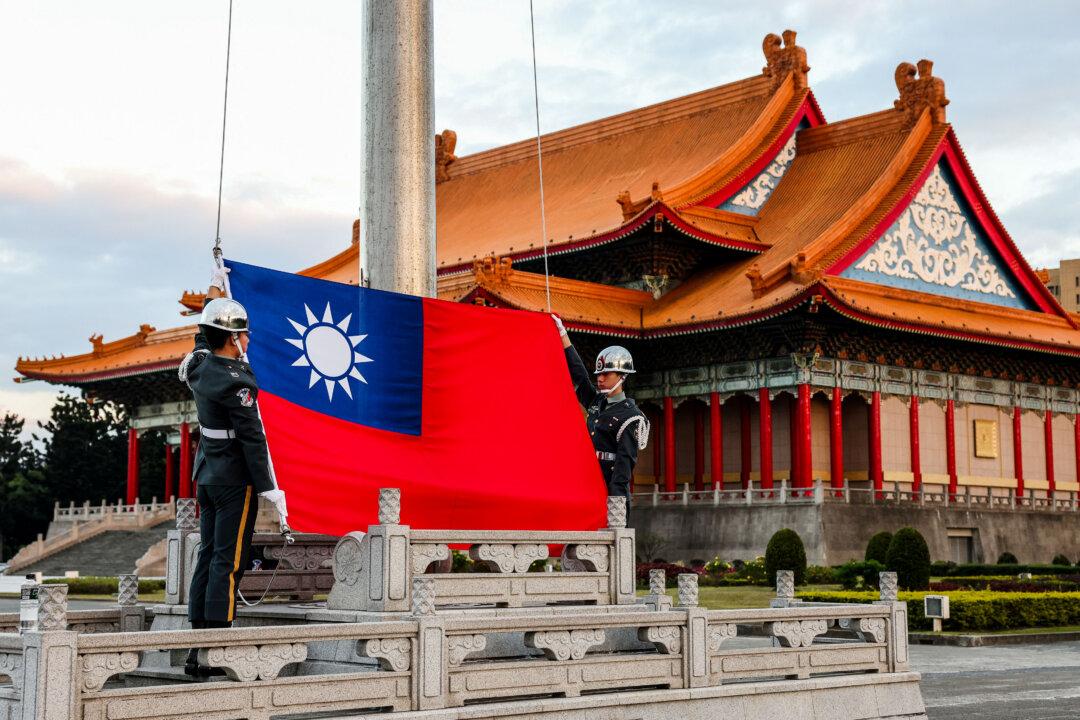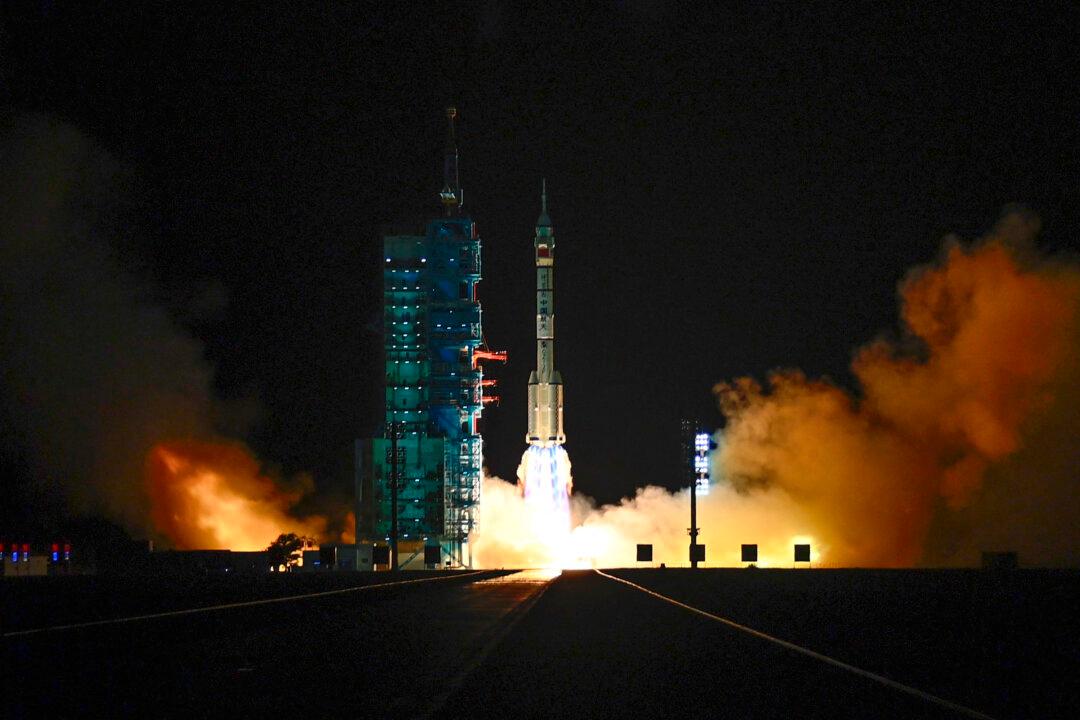In a notable shift in its defense posture, Japan has begun integrating civilian airports into its military operations. This development—a direct response to the evolving security dynamics in the Asia-Pacific—follows the Japanese government’s adoption of key National Defense Security documents last year. The strategy aims to bolster Japan’s preparedness against potential conflicts, aligning with its proactive diplomatic efforts to deter war.
A striking example of this new approach was witnessed on Nov. 13 at Oita Airport, Kunisaki Peninsula. Moments after a commercial flight from All Nippon Airways (ANA) touched down, the runway welcomed an unusual sight: four F-2 fighter jets from the Japanese Self-Defense Forces. These jets, after refueling alongside commercial planes, promptly resumed their journey from Haneda International Airport.
This unprecedented use of a civilian facility, operational for over half a century, sparked curiosity and concern among local residents. Questions arose about the future role of Oita Airport in military operations, highlighting the public’s intrigue and apprehension about this strategic shift.
Oita Airport isn’t alone in this transformation. Since mid-November, similar activities have been conducted at other civilian airports across Japan, such as Tokunoshima Airport in Kagoshima Prefecture and Okayama Airport in Okayama Prefecture, among others. This nationwide initiative involves rapid landing and takeoff drills, sometimes including refueling operations.
Japan’s Air Self-Defense Force, traditionally operating from seven bases, is expanding its reach. With about 60 civilian airports equipped with runways suitable for fighter jets, this move significantly widens Japan’s operational flexibility in the face of potential threats. This is particularly pertinent given the ongoing missile activities by North Korea and the military escalation by China, presenting real and immediate risks.
As part of this strategic realignment, by mid-November, the Japanese government targeted enhancing military functions at 40 airports and seaports, primarily in Okinawa, Kyushu, and Shikoku Island. These efforts involve close coordination with local authorities.
This tactical repositioning is underpinned by the “3 Security Documents” passed by the Japanese Cabinet on Dec. 16, 2022. These documents—the National Security Strategy, the National Defense Strategy, and the Defense Capability Build-up Plan—explicitly allow the Self-Defense Forces to utilize existing civilian infrastructure for training and operational purposes, significantly recalibrating Japan’s defense framework.

Security Challenges and Strategic Responses in a Complex Global Landscape
The Japanese Ministry of Defense, acknowledging the most challenging security environment since World War II, underscores the urgency to fortify national defense capabilities to safeguard its citizens and maintain peace. This sentiment reflects a broader consensus among military experts, civilian think tanks, and scholars, who advocate for a comprehensive overhaul of Japan’s defense system.Critiques from various quarters highlight Japan’s current vulnerabilities in facing unexpected attacks. There is a growing call for an integrated approach, involving both governmental and civilian sectors, to enhance Japan’s domestic response mechanisms.
Prime Minister Fumio Kishida, in a pivotal statement following the Cabinet’s endorsement of the “3 Security Documents,” depicted the global scenario as a “historical crossroads.” He drew attention to the shifting international power dynamics, where national confrontations and aggressive pursuits of interests are increasingly evident.
Mr. Kishida noted that these changes have not only deepened the divide in globalization but also expanded the spectrum of security concerns, transcending traditional diplomatic and defense realms into economic and technological spheres.
The prime minister highlighted the escalating nuclear and missile capabilities of neighboring countries, pointing to their efforts to forcibly alter the status quo. He referenced the recent surge in ballistic missile activities over Japan, including incidents within Japan’s Exclusive Economic Zone (EEZ). Mr. Kishida emphasized the blurring lines between war and peace, military and non-military actions, underscoring the comprehensive nature of contemporary security threats.
He explicitly mentioned the China’s assertive foreign policy and military maneuvers as significant challenges to Japan’s peace, security, and commitment to a rules-based international order.
- Retaliatory capabilities: Ensuring Japan possesses credible deterrence options.
- New domain responses: Amplifying capabilities in emerging areas like space, cyberspace, and electromagnetic fields.
- Southwest defense system: Bolstering defensive structures in the strategically vital southwest region.
Bolstering Defense and Diplomacy in a Multi-Pronged Strategy
Mr. Kishida, addressing the National Defense Academy’s graduation ceremony on March 26, underscored Japan’s commitment to shaping an international environment conducive to its interests, primarily through diplomatic channels.He emphasized the importance of adhering to universal values like freedom, democracy, human rights, and the rule of law. Central to this strategy is the Japan-U.S. alliance, along with fostering cooperative relations with multiple nations, marking a proactive approach in Japan’s foreign policy.
In 2023, to actualize the objectives laid out in the “3 Security Documents” and reinforce its overall defense posture, Japan’s top officials, including the prime minister, the foreign affairs minister, and the defense minister, embarked on numerous diplomatic and military endeavors. Mr. Kishida, in particular, undertook significant visits and diplomatic engagements worldwide.
Early in the year, Mr. Kishida’s diplomatic tour included stops in France, Italy, the United Kingdom, Canada, and the United States. This tour resulted in key agreements: a military cooperation pact with the United Kingdom and a space cooperation framework with the United States, accompanied by a joint statement.
These agreements were a response to challenges posed by the China and others, aiming to enhance individual and bilateral defense capacities. U.S. President Joe Biden lauded Japan’s strategic shift toward a more robust security stance.
Mr. Kishida’s visit to South Korea in May and subsequent discussions with President Yoon Suk Yeol notably improved Japan-South Korea relations, reinforcing the trilateral alliance with the United States.
This diplomatic effort was complemented by Japan’s participation in the Quad cooperation framework alongside the United States, India, and Australia, and its military collaborations with the Philippines and Vietnam.
By year’s end, leveraging his Middle East visit, Mr. Kishida engaged in pivotal talks with Italian Prime Minister Giorgia Meloni on Dec. 2, agreeing to collaborate in security and defense. On the same day, he met French President Emmanuel Macron, agreeing to counter the China’s influence in economic security.
In addition, Japan and Germany concluded an agreement to enhance cooperation in military logistics, including the provision of food and fuel.
Japan’s strategic pivot, integrating enhanced defense capabilities with active diplomacy, aims to counter the China’s influence. This approach is designed not only to safeguard Japan’s national security and regional stability but also to champion and uphold universal human values across the globe.







